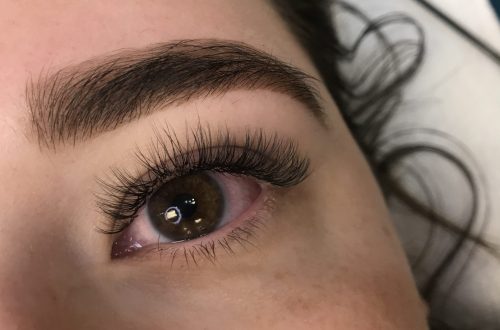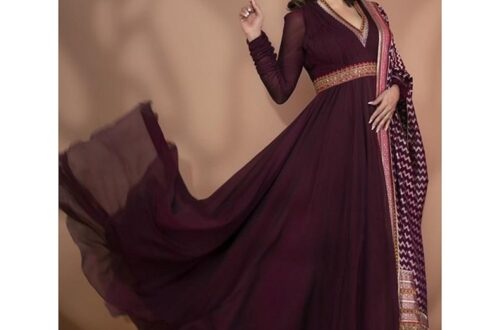In the 16th century, the idea of contact lenses first came out. Leonardo da Vinci suggested a method of submerging the head in a water bowl or wearing a glass hemisphere filled with water over the eyes for exploring accommodation mechanisms rather than vision correction.
Later on, Descartes suggested a liquid-filled glass tube capped with a lens for vision correction. But this was not implementable as it would make blinking impossible for being in direct contact with the cornea.
Thomas Young used Descartes’ model in the 19th century. He corrected the refractive power by using another pair of lenses. The water-filled lenses were affixed by using wax.
Sir John Herschel, in 1845, suggested two ideas for the correction of vision: an animal jelly-filled glass capsule which will be spherical, and a cornea mold impressed on a transparent medium. He never tested his ideas. But these ideas were used to refine the making of molds and perfecting the shape of lenses according to eye shape by Joseph Dallos, a Hungarian physician.
Louis J. Girard, in 1887, invented a scleral contact lens or a full eye lens. Still, the first a focal scleral contact lens was fabricated in 1888, by a German ophthalmologist Adolf Gaston Eugen Fick. The lenses were made with blown glass, approximately 18-21mm in diameter, rested on the tissue surrounding the cornea. These tissues are less sensitive, but the lenses could only be worn for a few hours. The same year, August Muller from Germany, manufactured a more suitable blown glass scleral lens which cured his own myopia.
With the 20th century came the development of PMMA, polymethyl methacrylate, and opened the way for plastic scleral lens manufacture. A hybrid lens made from plastic and glass was introduced in 1936 by William Feinbloom. A complete plastic lens was produced in 1939 by Dr. Istvan Gyorffy.
Rigid and Cornea Lenses (1949-1960s)
In 1949, the corneal lens was made. These were smaller and sat on the cornea rather than all the visible ocular surface or full eye. These lenses could be worn for longer hours.
During the 1960s, the lens became more viable and soft.
Soft and Gas Permeable Lenses (1959-current)
PMMA lenses don’t allow oxygen to pass the cornea and conjunctiva. This could cause potentially severe and adverse clinical effects. This problem was addressed by the development of oxygen-permeable but rigid materials during the 1980s and 1990s. Norman Gaylord is a prominent name when it comes to the development of oxygen permeable lenses.
In soft lenses, the major breakthrough was made by Otto Wichterle and Drahoslav Lim, Czech chemists, in 1959. The work of these scientists led to the production of hydrogel lenses in various countries in the 1960s. In 1971, Food and drug administration, the USA approved the Softens material. This material offered much greater comfort. The polymers improved over the next 25 years. Rishi Agarwal, a British Optometrist in 1972, suggested disposable soft contact lenses for the first time.
Another milestone was the introduction of silicone hydrogel contact lenses in 1998. They were highly porous and could be worn for an extended period. Later on, the second-generation silicone hydrogel was introduced galyfilcon A and senofilcon A. Right now, for contact lenses, third-generation polymer Comfilcon A is used for its very high oxygen permeability.
Types of Contact Lenses
Contact lenses can be classified:
- By their function.
- Material used.
- How long they can be worn.
- Replacement plan.
Soft Contact Lenses
These lenses are made from flexible, soft plastics, silicone hydrogel, which is oxygen permeable. These are very easy to adjust to and comfortable to wear.
Rigid Gas Permeable Contact Lenses
These lenses are durable, provides a crisper and clearer vision, and are resistant to deposition. They are cheaper and easy to handle. But they are a bit more challenging to get used to. They might take a week or two for adjustment as compared to a few days for soft lenses.
Extended Wear Contact Lenses
These contact lenses are worn for longer durations, overnight or six nights, or maybe up to 30 days. These are soft contact lenses made up of oxygen permeable material. Some rigid gas permeable lenses are also approved extended wear lenses. After every scheduled removal, it’s good that the eyes get at least a night rest without lenses.
Disposable Contact Lenses
By the definition of FDA, disposable means use once and then discard. According to lens sellers, soft contact lenses are called disposable, following a replacement plan. The extended wear lenses may be worn for the prescribed period and then discarded.
Scleral Lens
Also known as Sclera Contact Lens or full eye lens. These are large lens that rests on the sclera or white part of the eye. These lenses are designed to cure many eye conditions, out of which some are non-responsive to other treatments.
Medical Uses
These lenses are used to improve light sensitivity, vision and reduce pain caused due to various disorders or eye injuries. Eyes disorders that can be treated using scleral lenses are microphthalmia, dry eye syndrome, Stevens-Johnson syndrome, corneal ectasia, keratoconus, and aniridia neurotrophic keratitis, Sjogren’s syndrome, high order eye aberrations, post LASIK complications, post corneal transplant complications, and pellucid degeneration. Chemical and burn a scleral lens can also treat injuries, surgical complications, and distorted corneal implants.
Special-Effect Scleral Contact Lenses
Sclera lenses are also referred to as special-effect lenses. They dramatically change the wearer’s eyes appearance. These lenses, used for costume purpose, have no fluid reservoir and are soft with a little resemblance with scleral gas permeable contact lenses. These are not designed for vision correction. These lenses are used in Hollywood movies like Underworld, the blacked-out eyes, and Underworld: Evolution, Star Trek, and Evil Dead, the whited-out eyes. These lenses are uncomfortable and can impede the wearer’s vision. However, they produce striking visual effects. These lenses could be the star of the costumes in Halloween. These can be customized as well. Imagine the number of ways these lenses can be used.
In cognitive science or ophthalmology, these full eye lenses are embedded with magnetic field sensors that are useful to measure eye movements.






10 Comments
Sandy Whatley
Striving to grow your website traffic? Our smart AI tool unlocks custom website traffic via keywords plus geographic data from global regions to streets.
Seeking increased revenue, livelier engagement, or expanded web impact?
We adapt it to fit your strategy. Enjoy a 7-day free trial period with no contract. Join now:
https://cutt.ly/MrT4RzmD
Ravi
Are you looking for a personal assistant who can handle your daily business operations and make your life easier? I can help with tasks related to admin, marketing, gathering data from multiple websites, answering emails, website management, social media, content writing, planning new projects, bookkeeping, entering data into softwares, and back-office assistance. I have an Inhouse Content writer, social media specialist, Data Entry Operator, Website Developer and Bookkeeper. My costing varies from $8/hr to $30/hr depending on type of project and its complexity.
If you are interested, send me an email at [email protected] with a list of tasks you want to accomplish, and We can discuss our collaboration over a video call as per your convenience.
Dani Saldana
Watch this if you are struggling to get targeted leads to your Darji website: https://www.youtube.com/watch?v=0vQRdhaE2j8
Maira Iqbal
Tired of low website traffic? This video shows how our AI can help: https://www.youtube.com/watch?v=0vQRdhaE2j8
Vernell Mayer
hotanal.com
Terry Lavallie
Hello
Need Help Managing Your Social Media?
Social Media Manager keeps your brand active across all platforms: Facebook, Instagram, TikTok, LinkedIn, YouTube, Pinterest, and X.
Increases visibility, and saves you time. More engagement, more growth without the daily hassle.
Do you need this service for your business? Try it now and see the difference.
Reply to this email, and I’ll be happy to share more details with you.
Best regards,
Terry
Belgium, VLI, Neerglabbeek, 3670, Rue Engeland 410
To stop any further communication through your website form, Please reply with subject: Unsubscribe !darji.in
Novella Swartz
Hello
Boost Sales Fast with Rapid Traffic Flow
Want more traffic and real buyers? Rapid Traffic Flow sends high-converting traffic straight to your site-fast, easy, and hands-free.
Perfect for boosting product visibility and increasing sales without extra effort.
Start getting real results now: https://rb.gy/bx4rvz
Best regards
Novella
If you wish to unsubscribe, please reply to this email.
Brooks Dambrosio
Hello
I’m Making $245/Day With This Simple Sales Strategy
I’ve discovered a proven method that helps turn casual clicks into real sales effortlessly.
This tool boosts your conversion rates by automating follow-ups and optimizing customer engagement, so you earn more with less work.
Ready to start earning daily? Click here to unlock your sales potential now => https://rb.gy/gk649q
Best regards
Brooks
If you wish to unsubscribe, please reply to this email.
Carlton Wesley
Want more targeted leads to your website? Our AI-powered tool drives real results fast. Sign up for a 7-day free trial.
https://cutt.ly/frUA8saw
Norine Flores
Hello
I’m Making $245/Day With This Simple Sales Strategy
I’ve discovered a proven method that helps turn casual clicks into real sales effortlessly.
This tool boosts your conversion rates by automating follow-ups and optimizing customer engagement, so you earn more with less work.
Ready to start earning daily? Click here to unlock your sales potential now => https://rb.gy/gk649q
Best regards
Norine
If you wish to unsubscribe, please reply to this email.